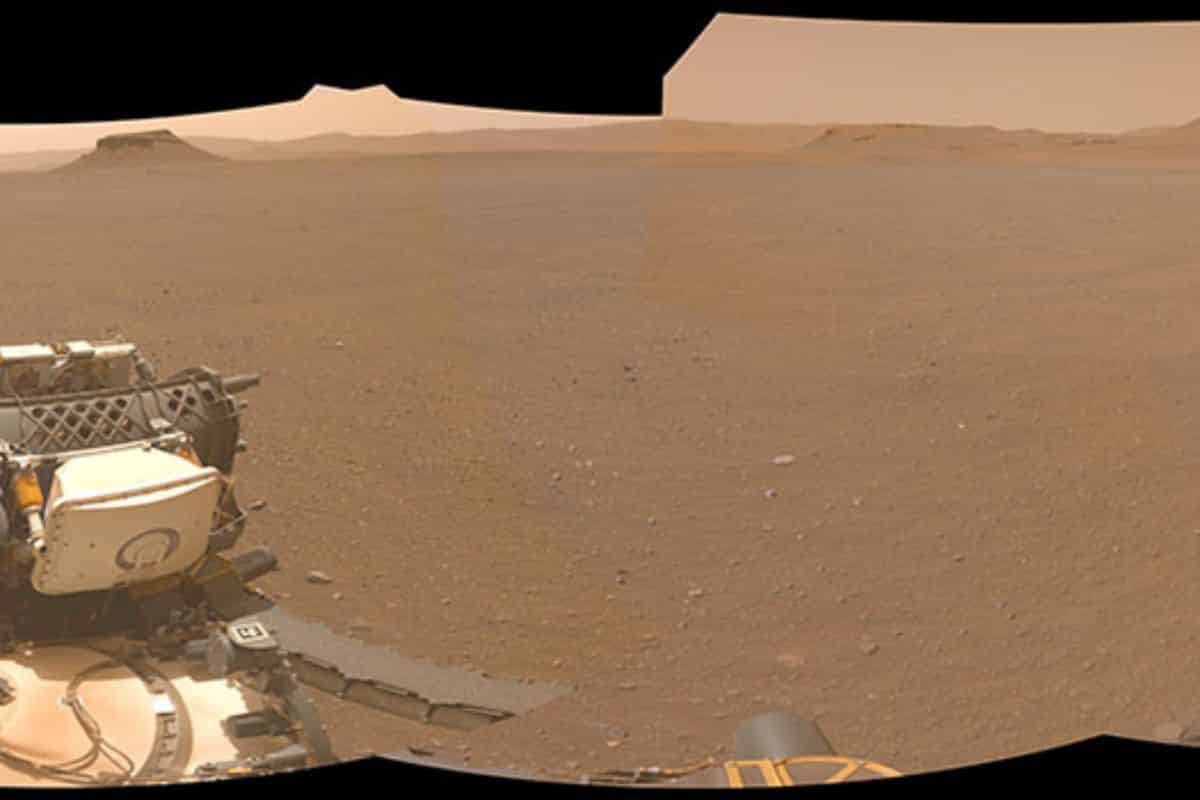
And the mantra is: the duller, the better.
Mars rover Perseverance is on the hunt for traces of (decayed) life. And in this quest, the rover takes samples of Martian rock in several places. Those samples are then stored in airtight titanium tubes that are picked up during a future mission and then delivered to Earth. Although that follow-up mission is still a while away, Perseverance has already started looking for a suitable landing spot.
samples
The six-wheeled robot cart certainly does not sit still. In the meantime, he has already drilled, collected and sealed nine samples of Martian rock. The ninth sample Perseverance took a few days ago was the first from the ancient river delta in Jezero Crater.
The monsters are collected piece by piece in the huge Jezero Crater. However, scientists are particularly curious about the samples collected in the delta region of the crater. This is the part of the crater where billions of years ago – when Mars was still wet and humid – a river emptied into a lake located in the crater. The ancient delta may still be rich in clay minerals, and researchers are eager to get their hands on it, as such minerals may harbor fossilized traces of microbial life and thus reveal whether Mars once harbored life.
The plan is for the rover to eventually drop all the collected sample tubes onto the surface. Subsequently, these valuable samples will be collected during the planned Mars Sample Returnmission are picked up and brought to Earth.
Mars Sample Return Mission
this future Mars Sample Returnmission — likely to launch by 2028 — promises to be a historic but complicated undertaking. The mission will consist of several craft, including a ‘fetch rover’, a rocket launched from the surface of Mars and an orbiter to safely drop the collected samples back to Earth. It is, of course, essential that the spacecraft used during the Mars Sample Returnmission on the red planet will land, arrive safely. And there is an important task for Perseverance.
Suitable landing spot
Recently, the rover started looking for a suitable landing site for the follow-up mission. And it has to meet quite a few requirements. “Essentially, a boring landing site is good,” explains NASA program manager Richard Cook. “The flatter and duller, the better we like it. Because while there’s a lot to do when we get to Mars and pick up the monsters, sightseeing isn’t one of them.”
Right
Preference is given to a flat surface within a radius of 60 meters. And so Perseverance hit the road. The rover has inspected several spots on the red planet to see if it is flat enough. In addition, there should be no large rocks in the vicinity, the team would prefer a place without sand dunes and the terrain should of course not rise steeply.
Spotted location
Perseverance has spotted a promising location that meets these high standards. A place that the team already had in mind.

Perseverance used one of its navigation cameras to capture this panoramic image of a potential and suitable landing site for the Mars Sample Return lander. Image: NASA/JPL-Caltech
“We had our sights on this location before Perseverance landed,” said team member Al Chen. “But images taken from orbit around Mars don’t tell you everything. Now we have some closer shots that show we were right. The spot in question will most likely be on our shortlist of potential landing sites for the Mars Sample Returnmission.”
The Mars Sample Returnmission is expected to revolutionize our understanding of Mars, studying carefully selected samples of the red planet using the most advanced instruments. Not only do scientists hope to learn more about the early evolution of our closest neighbour, the samples may also reveal whether Mars was once habitable and harbored life. This is of course very interesting for several reasons, not least because the history of Mars will also expand our knowledge of all rocky planets in the solar system, including Earth.
Source material:
†NASA’s Perseverance Scouts Mars Sample Return Campaign Landing Sites” – NASA
Image at the top of this article: NASA/JPL-Caltech